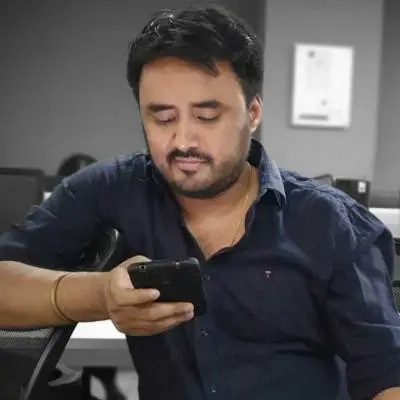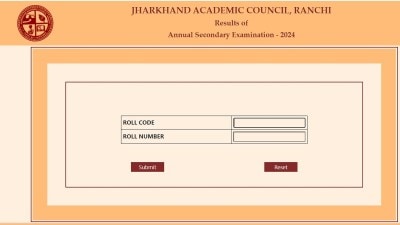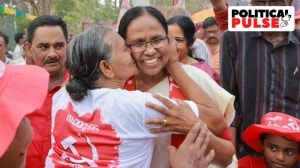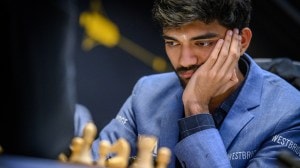- India
- International
What kept Munna Bajrangi going? Clues in a carpet shop, Purulia arms drop and a mortuary
In eastern UP’s badlands where gangsters and politicians happily mingle, Munna Bajrangi was the outlier who only knew the language of the gun. Still, what kept Prem Prakash Singh from Pure Dayal going? The Indian Express look for clues, from a carpet shop to a Purulia arms drop, and a mortuary to a jail.
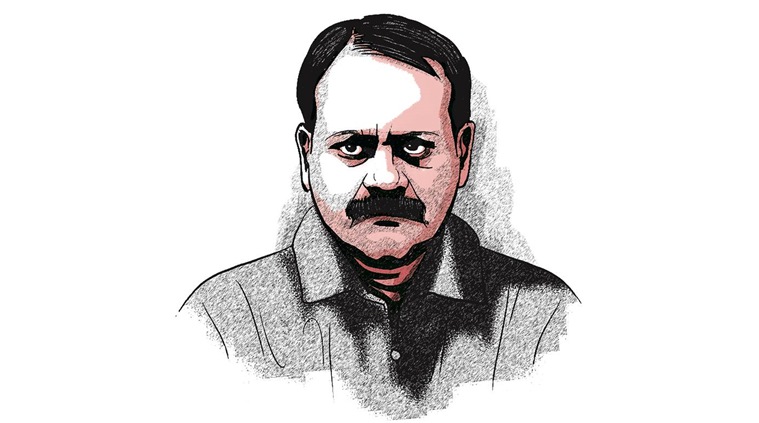 Munna Bajrangi was shot dead at Baghpat Jail. Illustration by CR Sasi Kumar
Munna Bajrangi was shot dead at Baghpat Jail. Illustration by CR Sasi Kumar
In the badlands of eastern UP, most sharpshooters rarely have a career beyond a decade. They either become politicians or end up dead. Not Munna Bajrangi. His career in crime spanned three and a half decades, during which he lived and shot recklessly, piling up over two dozen cases of murder and extortion against him. That came to an end on July 9, when Bajrangi was shot dead in Baghpat jail, allegedly by fellow prisoner Sunil Rathi, at age 54. With his family blaming local politicians, including former BSP MP Dhananjay Singh, for the murder, the incident served to remind how effortlessly crime and politics run into each other in eastern UP, often with dangerous consequences. Steeped in poverty and wracked by caste fissures, the region is home to some of the most dreaded criminal-politicians, among them Mukhtar Ansari, Ateeq Ahmed, Brijesh Singh and Dhananjay Singh. It is in this milieu that Prem Singh aka Munna Bajrangi grew up.
Two days after his killing, on a Wednesday, friends and relatives continue to pour into Pure Dayal, Bajrangi’s ancestral village in UP’s Jaunpur district. A winding brick road, barely enough for a four-wheeler, connects Pure Dayal to the main Jamalapur-Mariyahu road. Past mud huts with tiled roofs are Bajrangi’s single-storey home with a large courtyard, one of the few brick-and-mortar structures in the village. Along the compound wall of the house is a row of cars of the high-profile mourners who are inside, all escorted by privately hired gunmen. A few policemen look on from a van stationed about 100 m away.
Those gathered talk of how “an era has ended” with Bajrangi’s death and how power equations would change. As former SP MP Tufani Saroj arrives in his SUV, the conversation veers towards how, despite all threats, the family was assured of Bajrangi’s safety as the Baghpat jailer was an acquaintance. “But what can the jailer do when people from top to bottom are involved,” reasons Tufani as the others stand around and nod, heads bent and hands folded across their chests.
Outside the house, Bajrangi is best not discussed. “We have not seen him in years….” “Don’t ask us, we have family…,” they say, before slipping away. Born as Prem Singh in 1964 to Parasnath Singh, a marginal farmer from Jaunpur who later shifted to Mumbai to run a dairy shop in the Lalbaug area, Bajrangi spent most of his childhood in Pure Dayal.
He went to the local government school but was never interested in studies. By the time he reached Class 5, he dropped out. “He was more interested in roaming around with friends and wrestling. He was a great wrestler. When it took him three years to go from Class 4 to 5, he dropped out,” says his elder cousin Jagat Singh, who grew up with him.

Prem’s love for wrestling made him a devotee of Lord Hanuman, later earning him the moniker “Bajrangi”. To his parents, elder siblings and relatives, he was already “Munna”. By the time he hit his teens, he learnt carpet weaving and began conducting business with Bhulan Singh, a carpet manufacturer in the area. He was barely 14 when his family got him married to Shakuntala Devi, a local girl.
This was also the time his foray into crime began. In January 1982, Prem, along with his brothers, got into a fight with one Kailash Pandey from a neighbouring village and the first criminal case, of assault, was registered against him at Sureri police station, which has its jurisdiction over Pure Dayal. The same year, he got involved in a case of robbery and attempt to murder at Kakopur village in the area.
“It was nothing. Just a local scuffle,” remembers Jagat, who was a co-accused in the assault case, “Prem was not a criminal.”
Read | The Rathi files: Old feuds, cases of murder, extortion
But in two years, he became one when he allegedly murdered Bhulan Singh, over unpaid dues, according to records at the Rampur police station. He then fled the village, leaving behind his wife who later married his elder brother Rajesh, who lives in Mumbai.
That was the last time anyone in Pure Dayal remembers seeing him. Between then and 2009, when he was arrested from Mumbai by the Delhi Police’s Special Cell, he had gone from being Prem Singh to Munna Bajrangi, from a petty criminal to a dreaded gangster.
According to the UP Police, Bajrangi was first spotted by Jaunpur muscleman Gajaraj Singh, who used him to threaten people and eliminate his rivals. As cases began piling up against Bajrangi, by the early 90s, he shifted from Jaunpur to Varanasi. He was still not in the big league of crime and tried his hand at odd jobs, police say.
After reaching Varanasi, he approached his childhood friend I B Singh, who was a student of Banaras Hindu University (BHU) and started staying with him. “Singh introduced Bajrangi to one Anil Singh, a BHU student involved in student politics who had many criminal cases against him,” says an official of the Delhi Police, quoting from Bajrangi’s interrogation report.
Anil Singh soon became Varanasi’s deputy mayor and Bajrangi his hanger-on and was often seen with a gun. He also worked with local businessman Narendra Singh as a helper and cleaner on his buses.
It was not until he came in contact with local gangster Kripa Chowdhary, say UP police sources, that Bajrangi’s journey into organised crime began. “In those days, Kripa was a big name and Mukhtar Ansari was a rising figure under his mentorship. Kripa introduced Bajrangi to Ansari and thus began a partnership that would last over a decade, resulting in a pile of dead bodies in the Varanasi-Jaunpur belt,” says a UP Special Task Force Officer (STF) who has tracked Bajrangi for years and interrogated him after his arrest in 2009.
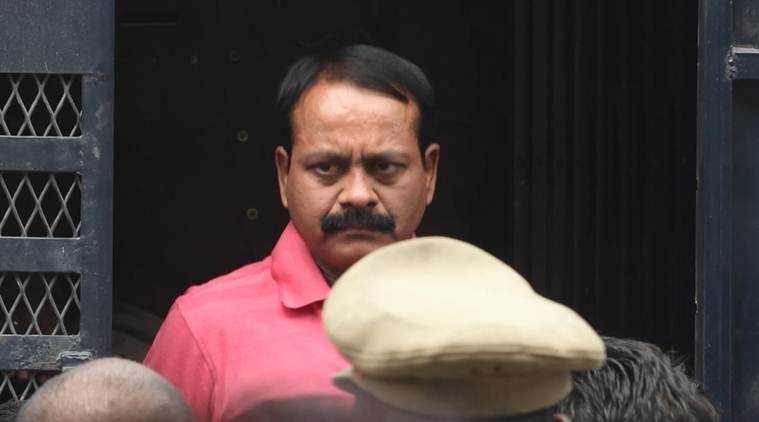 Munna Bajrangi (Express Photo by Vishal Srivastav.)
Munna Bajrangi (Express Photo by Vishal Srivastav.)
Ansari used Bajrangi to eliminate his rivals — in particular people associated with local Rajput strongman Brijesh Singh. Bajrangi allegedly helped Ansari corner contracts in the Railways and other government departments, apart from extorting money from local businessmen and coal markets – areas where Brijesh Singh was his competitor.
The first sensational murders Bajrangi allegedly committed were of local musclemen Chhote Singh and Bade Singh in the Cantonment area of Varanasi in 1995. The next year, he shot dead Jamalapur block pramukh Kailash Dubey and two others in a hail of AK 47 bullets, allegedly at the behest of his earlier mentor Gajaraj Singh. That was the first time Purvanchal heard the gunshots of a Kalashnikov.
“These were the first batch of weapons from the 1995 Purulia arms drop that had reached the gangs of Purvanchal. Ansari was among the first to get hold of these weapons,” says a UP police officer.
Read | Munna Bajrangi shot dead: 10 facts about the slain gangster
Despite his growing proximity to Ansari, Bajrangi reportedly carried out contract killings for other gangsters such as Gajaraj. However, it was one particular incident in 1996 that sealed his partnership with Ansari.
In early 1996, Bajrangi allegedly killed BJP politician Ramchandra Singh along with his bodyguard, reportedly at the behest of Gajaraj Singh. While he and an associate were fleeing on a bike, Bajrangi accidentally shot himself in the foot and went straight to Ansari for help, say police. Ansari got him shifted to a Patna hospital, where he was treated for six months, and even footed the bill, they say.
“This incident won Ansari the unflinching loyalty of Bajrangi who believed being loyal was an innate Rajput quality. This also became his undoing as he could not chart a course of his own and remained Ansari’s henchman for far too long,” says the STF officer.
But in those days, Ansari was also the best boss a shooter could have. “Even in the early 90s, Ansari gave his henchmen a salary of Rs 10,000. Given that Bajrangi was his right hand, he must have got much more,” says the officer.
It was a lesson in benign leadership that Bajrangi passed on to his own shooters in later years. He is said to have not only given them a salary but also taken care of all their expenses, even shoes and sunglasses.
In 2001, the UP Police stumbled upon a financial transaction between Bajrangi and a Varanasi businessman, who had allegedly been paid over Rs 1 lakh. When police questioned the businessman about the transaction, he revealed it was for providing branded clothes, shoes and other accessories to Bajrangi’s men and six policemen, say sources.
Bajrangi’s reputation, along with his daredevilry — he committed most of his murders in broad daylight in busy bazaars or simply broke into people’s homes and shot them dead — perpetuated his fear and kept him in demand for long. Police say the fact that he never drank alcohol and rarely used mobile phones also helped him stay out of their net.
But he also had luck on his side.
In 1998, a joint team of the UP STF and Delhi Police’s Special Cell, then led by encounter specialist Rajbir Singh, had cornered him at Samayapur Badli near the Delhi-Haryana border. An encounter ensued and Bajrangi was “shot dead”. There were 17 bullet wounds (entry and exit) on his body when he was taken to the mortuary. However, when a doctor arrived to conduct the post-mortem procedure, he found Bajrangi breathing. “We were shocked,” recalls an STF officer. “He stayed in hospital for a couple of months and then began his activities from jail before he came out on bail two years later.”
Read | How a SIM card led to the arrest of gangster Munna Bajrangi
Even in the 1996 case of the murder of Jamalapur block pramukh Kailash Dubey, while Gajaraj Singh’s son Alam is serving a life sentence, Bajrangi was acquitted. “In cases against Bajrangi, most witnesses would turn hostile,” says Inspector Arvind Singh of Sureri police station.
It was also the time that romance found its way into his life. Bajrangi fell in love with Seema, the sister-in-law of his childhood friend, and married her in 1997. Later on, Seema not only ran his businesses with her brothers but also handled his political work. A year later, as Bajrangi lay at the Hindu Rao Hospital in Delhi, recuperating after the 1998 encounter, his first child was born in the same building, only a few wards away. “My sister was seven months pregnant when the encounter happened. Simran was born when Jijaji was admitted in the hospital with bullet wounds. He doted on her as he believed he had survived because she had brought him good luck,” says Bajrangi’s brother-in-law Hemant Singh.
After surviving the 1998 attack, Bajrangi’s stock rose as he allegedly committed a spate of murders. A Varanasi police officer says he also began to branch out with his own business model, extorting money from doctors and businessmen, and forcibly acquiring old Varanasi bungalows near the Ganga at rockbottom prices and selling them at market rates.
In 2005, allegedly at the behest of Ansari, Bajrangi shot dead then BJP MLA from Mohammadabad, Krishnanand Rai. The murder was a direct result of the rivalry between Ansari and Brijesh Singh, who had begun to support Rai as a bulwark against the influence the former had acquired, partly due to Bajrangi’s phenomenal run in the crime world.
Both Ansari and Bajrangi were named in the FIR and Ansari was arrested. He still remains behind bars in a jail in Banda in connection with the case. The killing forced Bajrangi to go underground and he remained in exile in Mumbai till 2009. That was the beginning of his downfall. In Mumbai, hiding from police and having severed all contacts with his fief in Varanasi, Bajrangi survived on doles from Ansari. Between 2005 and 2009, not a single case was registered against Bajrangi in UP.
Read | Munna Bajrangi shot dead: The dreaded gangster who once nursed political ambitions
According to UP police sources, his arrest in 2009 from Malad in Mumbai was a result of his desire to come out and begin his activities. “During his interrogation, he said he had become a pauper in those four years. He showed us his car, a Hyundai Santro, and asked if we had seen a gangster driving such a car,” says an officer who interrogated him.
Meanwhile, despite being in jail, Ansari’s clout had grown in the region as most of his rivals had been either eliminated or were scared for their lives. Even from jail, Ansari kept winning election after election. He had also begun to sanitise his businesses, opening a string of benami companies which allegedly got government sub-contracts.
Police say that by then, Ansari, who was by looking at a political future for his family members, was no longer interested in Bajrangi and even saw him as a threat to his plans of establishing a clean business. Also, the mafia world of Varanasi had begun settling down with areas of influence neatly divided among gangsters. It had no space for Bajrangi.
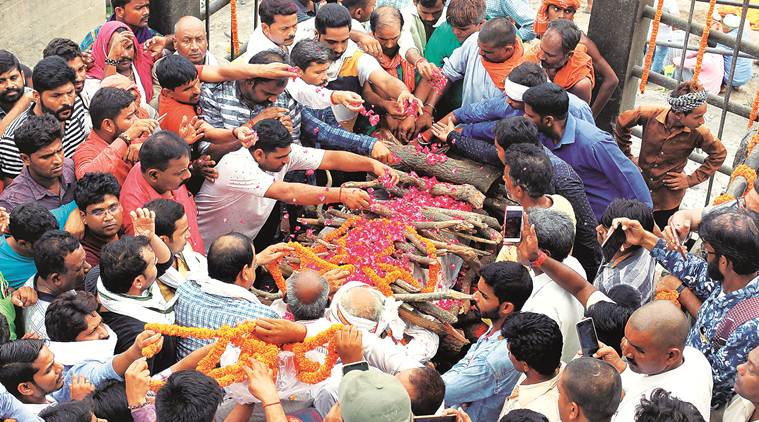 Munna Bajrangi’s last rites in Varanasi. (Express Photo by Anand Singh)
Munna Bajrangi’s last rites in Varanasi. (Express Photo by Anand Singh)
Meanwhile, Bajrangi tried his hand at politics even as he continued his extortion business from jail. He fought the 2012 elections from Mariyahu constituency in Jaunpur on an Apna Dal ticket and came a distant third. In the next election in 2017, his wife Seema fought and she lost too. “The difference between a Bajrangi and an Ansari or Brijesh Singh is education, intelligence and pedigree. Bajrangi had no idea of how to sanitise his business and enter public life. He thought he could win elections by throwing money freely,” says a Varanasi police officer.
According to an STF officer, Bajrangi remained a “lout” throughout his life. “He was also a reckless murderer — the reason why no one wanted to associate with him in his second innings. He is the only gangster in UP who could kill even if there was no money or political gain in it. He could kill for pride,” the officer says, referring to the murder of Varanasi jail’s deputy jailer Anil Tyagi, who was killed in 2013 allegedly by Bajrangi’s men merely because he had slapped the gangster in jail.
“In these parts, politics often flows through the barrel of the gun. But Bajrangi kept pulling the trigger for far too long. Perhaps, he did not know any better,” he says.
Apr 19: Latest News
- 01
- 02
- 03
- 04
- 05











